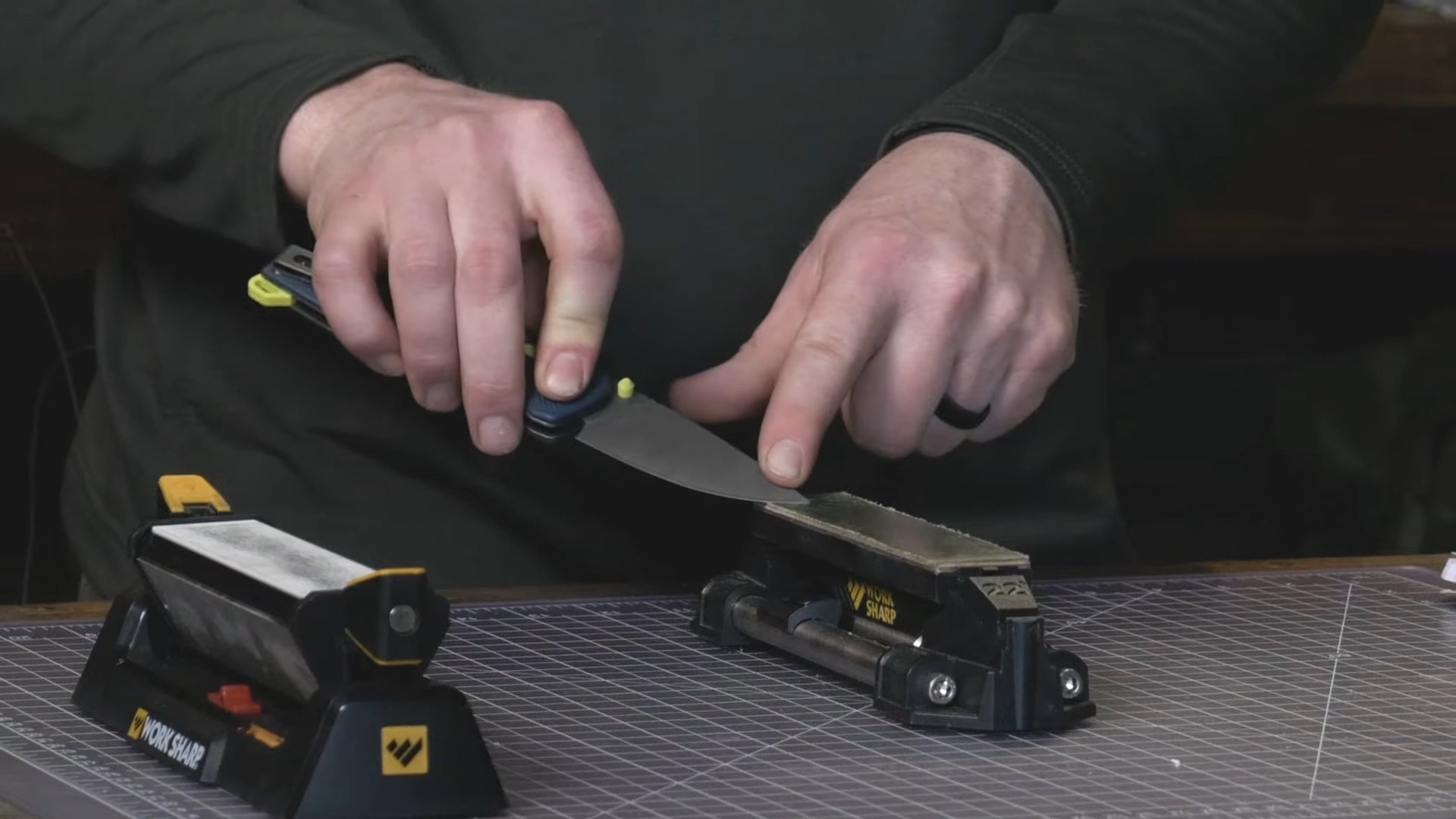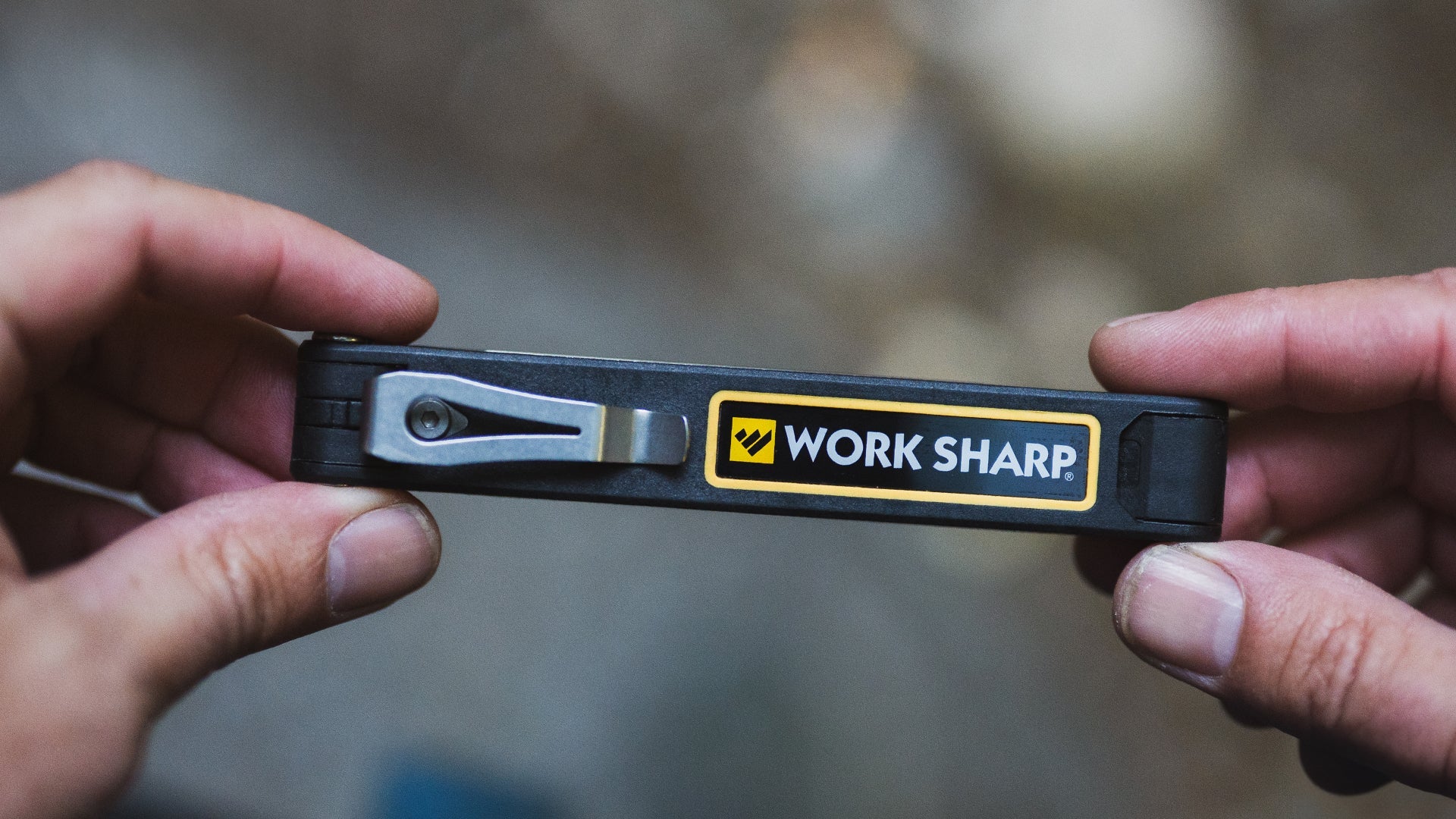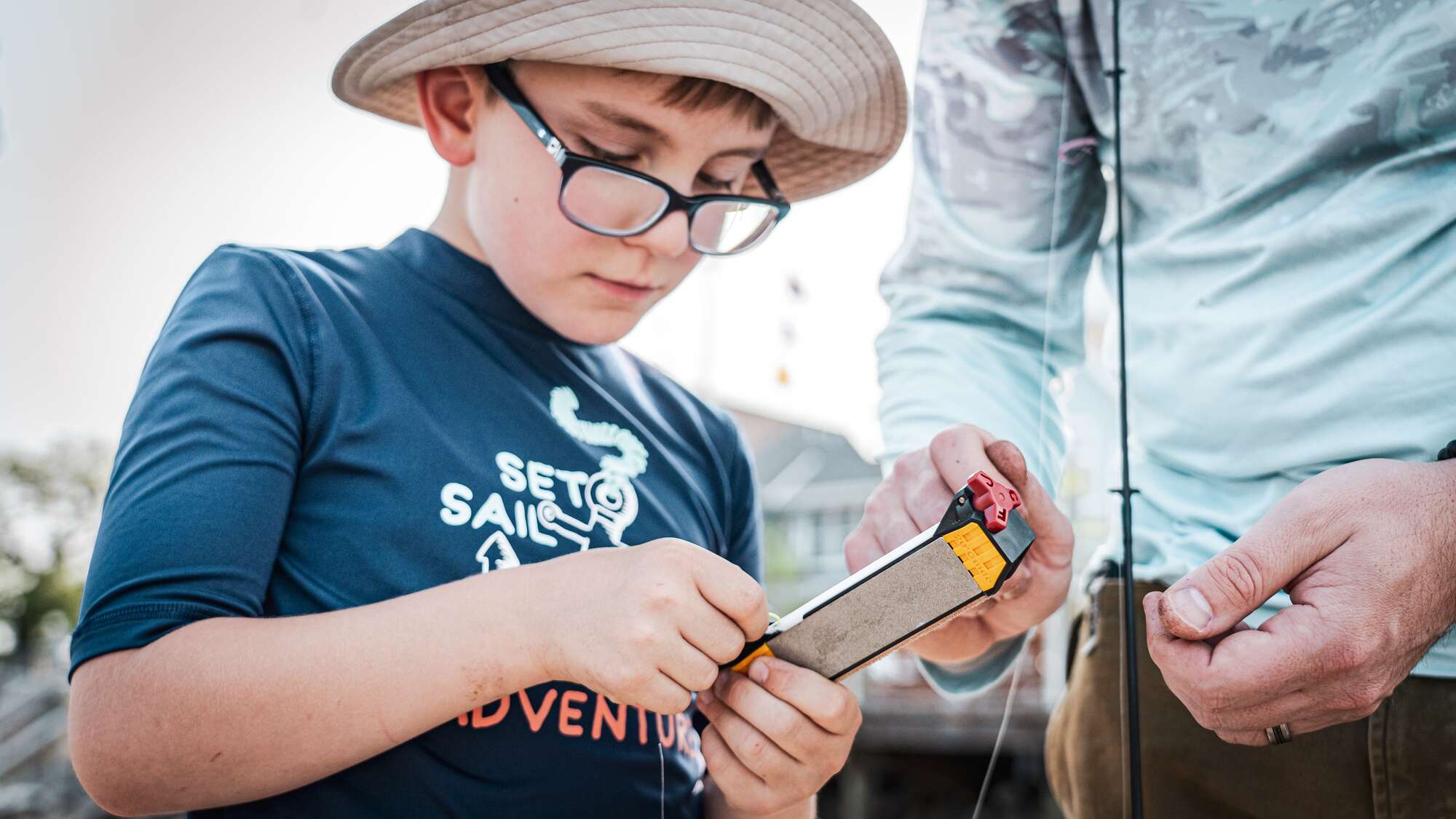In the world of cutlery enthusiasts, achieving the perfect edge on a knife is akin to an art form. From sharpening stones to honing rods, the quest for a razor-sharp blade knows no bounds. Today, we dive into the world of stropping, a technique shrouded in mystery and sophistication. In this episode of "The Workshop," hosted by Josh, we unravel the secrets of how to strop a knife to attain that coveted edge that effortlessly glides through anything in its path.
Stropping has long been whispered about by our fathers and grandfathers, a hushed ritual passed down through generations. But what exactly is stropping? To put it simply, stropping is the final step in the knife-sharpening process, where a leather strop and micro abrasive compound are employed to refine the knife's edge to razor-sharp perfection. It's time to grab a drink, relax, and embark on this journey of enlightenment.

At the heart of stropping lies the leather strop, a humble yet crucial tool. Josh uses a piece of leather imbued with a green compound, which contains microscopic abrasive particles called microns. These microns, measuring between 0.5 and 1 micron, work their magic on the knife's edge, honing it to brilliance. While the factory process involves buffing the knife on a wheel with compound, you can replicate this at home using leather, denim, canvas, or even a coarse leather belt. The sharpeners that Josh is using in this episode are the Guided Sharpening System and the Benchstone Knife Sharpener

The Stropping Technique: Now that we have our leather strop and compound ready, it's time to delve into the technique itself. Josh places the knife on the leather and rather than pushing forward, he draws the knife backward across the strop. This motion is alternated from side to side, effectively pushing any remaining burr from the sharpening process back and forth along the length of the knife. It is essential to maintain a similar angle to the one used during sharpening to ensure the best results. A slightly shallow angle will result in no contact with the cutting edge, while an excessively steep angle will dull the knife.

One of the advantages of using a leather strop is its forgiving nature. Unlike ceramic or diamond plates, leather provides a slightly higher tolerance for variations in the stropping angle. This means you have some room to experiment and find what works best for you. Remember to follow the entire shape of the blade, from the heel to the tip, and gradually decrease the pressure applied as you progress. Lighter pressure will contribute to a finer edge.
Over time, your leather strop may dry out, affecting its effectiveness. But worry not! Josh shares a neat trick to breathe new life into your strop. Simply apply a small amount of petroleum jelly to the strop and rub in a generous amount of compound. This will rejuvenate the leather and ensure it absorbs the compound effectively, giving you optimal stropping results. It's important to note that different types of strops, such as cardboard, can also be used, as they contain tiny abrasive particles that aid in the stropping process.

Now comes the moment of truth. After diligently stropping your knife, it's time to assess its sharpness. Josh demonstrates this by performing a simple paper test. A good working edge should allow the knife to slice through paper effortlessly. However, a razor-sharp edge takes it a step further. With minimal force or pressure, a razor-sharp knife should be capable of push cutting through paper, gliding effortlessly. Achieving this level of sharpness indicates that your knife is honed to precision.
While the paper test provides a quick and easy assessment of your knife's sharpness, there are other methods to measure sharpness more precisely. Josh introduces a tool called a "BESS tester." This device utilizes a standard piece of filament that you cut with your knife, measuring the downward force required to make the cut. The scale on the Bess Tester provides a numeric value, offering a quantitative measurement of your knife's sharpness. It's a useful tool for those seeking a more accurate and consistent assessment of their blades.
Mastering the art of knife stropping is a testament to your dedication to the craft. It's a journey that begins with understanding the principles and techniques involved and evolves with practice and experimentation. Each knife may require slight adjustments in stropping angle and pressure, as every blade has its own unique characteristics. By combining your newfound knowledge with patience and a keen eye for detail, you can transform any dull knife into a shining exemplar of sharpness.

As our journey through "The Workshop" continues, Josh hints at the next step in our knife maintenance odyssey—repairing damage. Knives are tools that inevitably encounter wear and tear. Chips, nicks, and broken tips can mar their once-perfect edges. In the upcoming episode, Josh promises to share insights on how to restore damaged knives to their former glory. So, stay tuned and get ready to bring your old favorites back to life!
Stropping holds the key to unlocking the pinnacle of sharpness. Armed with a leather strop and the knowledge of the stropping technique, you have the power to transform a dull blade into a precision instrument. The interplay between the leather strop and the micro abrasive compound breathes new life into your knives, ensuring they slice effortlessly through anything in their path.

Remember, stropping is an art that requires practice and finesse. Embrace the process, experiment with different materials, and refine your technique. The rewards will be evident when you witness your knife gliding through paper with unparalleled ease. So, step into "The Workshop" and join us on this journey of honing perfection.
Now, go forth and strop with confidence! Unleash the razor-sharp potential of your knives and elevate your culinary and cutting experiences to new heights. Sharpen, strop, and conquer!






